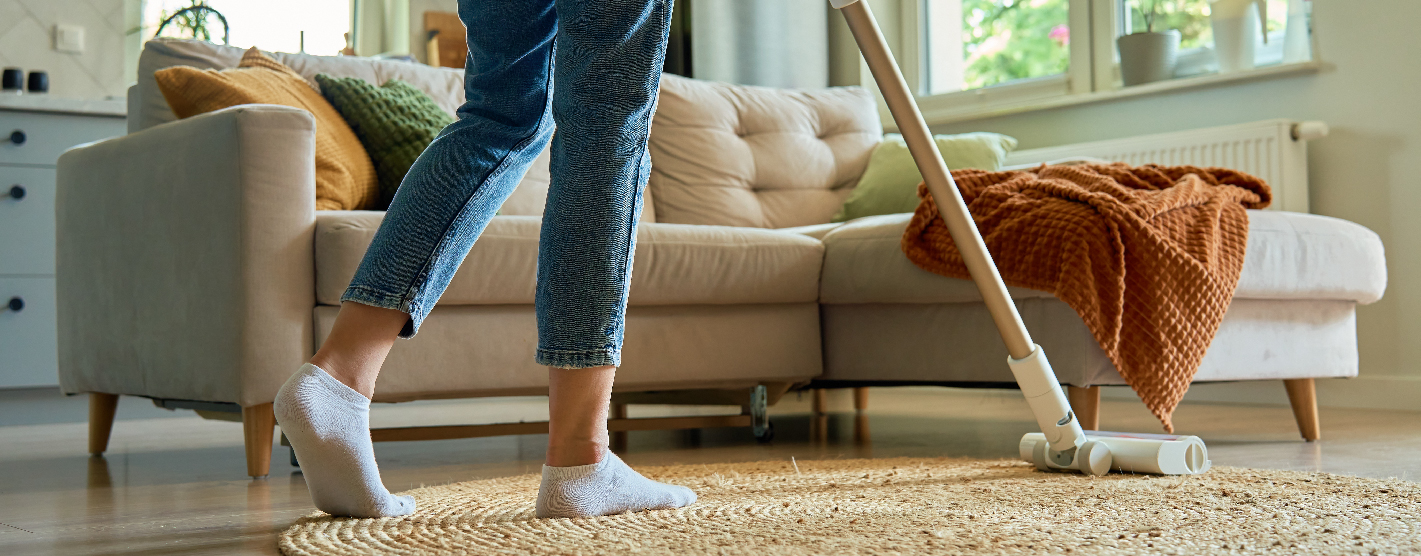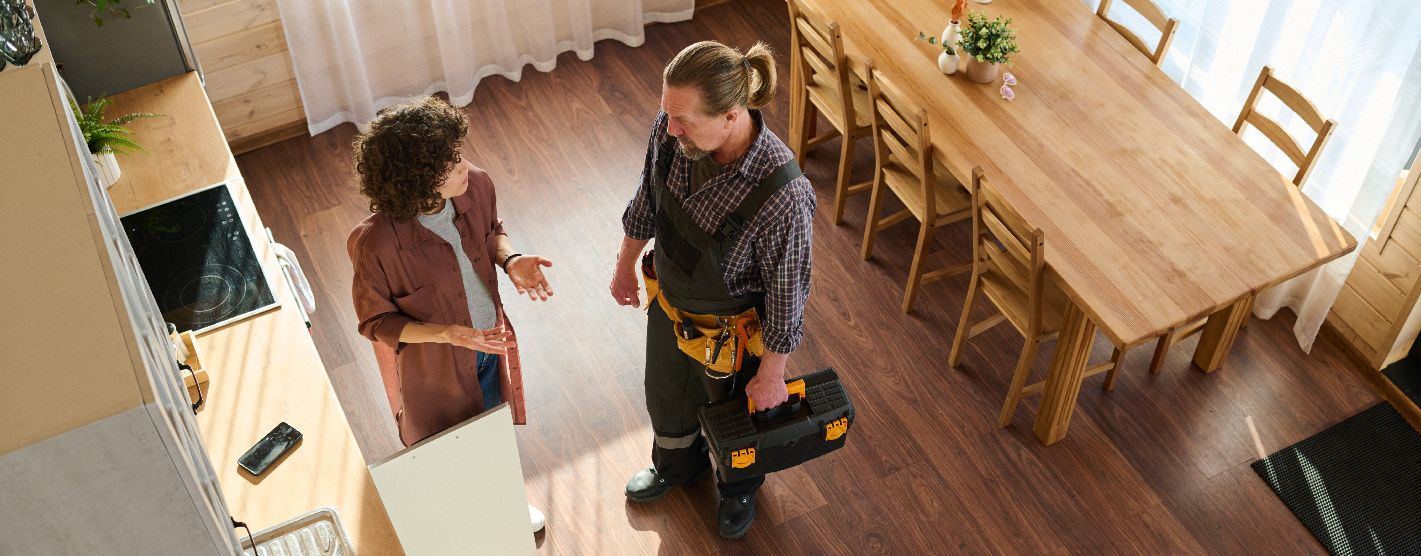- Indoor Air Quality
- What is Indoor Air Quality?
- Common Indoor Air Pollutants
- 10 Signs of Poor Indoor Air Quality
- Factors Affecting Indoor Air Quality
- How to Improve Indoor Air Quality
- Filter Choices for Improved Air Quality
- An Overview of Air Cleaning Devices
- Air Duct Improvement for Better Air Quality
- What to Expect During an IAQ Assessment
- Call Precision Comfort Systems
WHAT IS INDOOR AIR QUALITY?
Indoor air quality refers to the condition of the air within and around your house, especially as it relates to the health and comfort of its occupants. Poor indoor air quality can lead to a range of health issues, from minor irritations like headaches and fatigue to more severe conditions such as respiratory diseases and heart problems. Understanding the various elements that contribute to indoor air quality is essential before you can address them effectively
COMMON INDOOR AIR POLLUTANTS
- Biological Contaminants: These include mold, mildew, bacteria, viruses, pollen, and pet dander. They thrive in damp and warm environments and can cause allergic reactions and respiratory issues. Regularly cleaning and maintaining humidity below 50% can help control these contaminants.
- Chemical Pollutants: Volatile organic compounds (VOCs) from household products, pesticides, and tobacco smoke can be harmful when inhaled over time. These chemicals can lead to headaches, dizziness, and long-term health issues.
- Particulate Matter: Tiny particles from dust, dirt, smoke, and soot can be inhaled into the lungs, causing respiratory problems and exacerbating conditions like asthma and bronchitis.
- Radon: This radioactive gas can enter homes through cracks in the foundation and is a leading cause of lung cancer in non-smokers.
- Carbon Monoxide: This colorless, odorless gas is produced by burning fossil fuels and can be deadly in high concentrations. Improper ventilation of gas appliances can cause dangerous buildup.
10 SIGNS OF POOR INDOOR AIR QUALITY
- Persistent Odors: Unpleasant smells that linger, such as musty odors from mold or mildew, can indicate poor air quality. Chemical odors from cleaning supplies, paints, or building materials might also suggest the presence of VOCs (volatile organic compounds). These odors often point to underlying issues that must be addressed to improve air quality.
- Allergy Symptoms: Increased sneezing, coughing, itchy eyes, and runny noses among household members can indicate high levels of allergens like dust mites, pet dander, pollen, and mold spores in the air. If these symptoms improve when leaving the house, poor indoor air quality is likely to be blamed.
- Respiratory Issues: Difficulty breathing, wheezing, and shortness of breath can indicate poor indoor air quality. These symptoms are particularly concerning for individuals with asthma or other respiratory conditions. Pollutants like dust, mold, and chemicals exacerbate these issues and should be mitigated promptly.
- Frequent Headaches and Fatigue: Pollutant and carbon monoxide exposure can cause headaches, dizziness, and fatigue. These symptoms can severely impact daily life and productivity. If these symptoms improve when you leave the building, poor indoor air quality might be the cause.
- Condensation on Windows and Walls: Excessive moisture and condensation can lead to mold growth and increased dust mites, which thrive in humid conditions. Seeing mold on walls, ceilings, or other surfaces indicates a moisture problem contributing to poor indoor air quality. Mold spores can cause respiratory issues and allergic reactions.
- Dust Buildup: Excessive dust on surfaces, furniture, and around vents suggests poor air filtration and ventilation, contributing to lower air quality.
- Health Symptoms in Multiple Family Members: If multiple members of your household are experiencing similar health issues like headaches, fatigue, and respiratory problems, it could be due to poor indoor air quality. This pattern is a strong indicator that the indoor environment needs to be assessed and improved. Professional air quality testing can identify specific issues.
- Frequent Illness: Increased frequency of colds, flu, or other respiratory infections can indicate that the air quality in your home is compromised. Poor indoor air quality weakens the immune system, making individuals more susceptible to infections.
- Stale or Stuffy Air: A feeling of stale, stuffy air, especially in rooms with poor ventilation, can indicate inadequate air exchange and the buildup of indoor pollutants.
- High or Low Humidity Levels: Persistent high humidity levels can foster the growth of mold and mildew, while very low humidity can cause dryness and irritation.
FACTORS AFFECTING INDOOR AIR QUALITY
- Ventilation: Proper ventilation helps dilute indoor pollutants and brings in fresh outdoor air. Poor ventilation can trap pollutants inside your home.
- Humidity Levels: High humidity promotes the growth of mold and dust mites, while low humidity can cause dry skin and respiratory irritation. Maintaining indoor humidity levels between 30-50% is ideal for comfort and health.
- Temperature: Extreme temperatures can affect comfort and exacerbate health issues related to poor indoor air quality. Maintaining a consistent and comfortable temperature helps improve overall air quality. Proper insulation and HVAC maintenance play a crucial role in temperature regulation.
- Household Activities: Cooking, cleaning, and using household products can release pollutants into the air. Opening doors frequently can allow outdoor dust and pollen to enter, adding to the dust inside the home. People walking in and out of the house can also track the dirt on their shoes.
- Building Materials and Furnishings: Some materials and furnishings can emit VOCs and other harmful chemicals. Opt for low-VOC or non-toxic options when renovating or furnishing your home.

HOW TO IMPROVE INDOOR AIR QUALITY
Use Eco-Friendly Products: Choose low-VOC or VOC-free paints, cleaners, and other household products. These products emit fewer harmful chemicals, improving indoor air quality. Always follow the manufacturer’s instructions for use and storage.
Eliminate Tobacco Smoke: Avoid smoking indoors to prevent the release of harmful chemicals. Designate outdoor smoking areas to keep indoor air clean. Provide proper ventilation if smoking indoors is unavoidable.
Use Dehumidifiers and Humidifiers: In humid climates or seasons, use dehumidifiers to reduce moisture levels and prevent mold growth. Place dehumidifiers in areas prone to high humidity, such as basements. Regularly empty and clean the water collection container. In dry climates or during winter, use humidifiers to add moisture to the air and prevent dryness. Choose a humidifier with a built-in hygrometer to maintain optimal humidity levels. Clean humidifiers regularly to prevent mold and bacteria growth.
Regularly Clean: Reduce dust, mold, and pet dander by keeping your home clean. Use a vacuum with a HEPA filter to trap small particles. Regularly wash bedding, curtains, and other fabrics that can accumulate allergens.
HVAC Maintenance: Regularly maintain your heating, ventilation, and air conditioning (HVAC) system to ensure it operates efficiently and effectively. Replace filters regularly as recommended by the manufacturer. Schedule semi-annual professional inspections to keep your system in top condition.
Ensure Proper Ventilation: Use exhaust fans in high-moisture areas like kitchens and bathrooms. Ensure that vents are directed outside rather than into attics or crawl spaces. Properly ventilating your home helps control humidity levels and prevent mold growth.
Fix Leaks: Repair any leaks in your home to prevent water damage and mold growth. Check for leaks in roofs, windows, and plumbing. Address any moisture issues promptly to avoid long-term damage.

filter choices FOR IMPROVED AIR QUALITY
High-Efficiency Pleated Filters (MERV Rating: Typically 11 to 13)
AN OVERVIEW OF AIR CLEANING DEVICES
Air cleaners and purifiers can help remove pollutants from the air. Here are some options:
- HEPA Filters: High-efficiency particulate air (HEPA) filters can trap small particles, including dust, pollen, and pet dander. These filters are effective in improving air quality in homes with allergy sufferers. Regularly replace HEPA filters to maintain their efficiency.
- Activated Carbon Filters: These filters can remove gases and odors, including VOCs, from household products. Activated carbon filters are particularly useful in kitchens and areas with strong odors. Combine with other filtration systems for comprehensive air cleaning.
- UVGI Cleaners: Ultraviolet germicidal irradiation (UVGI) cleaners use UV light to kill bacteria, viruses, and mold spores. These devices are often integrated into HVAC systems. Regular maintenance is necessary to ensure UV lamps remain effective.
- Electronic Air Cleaners: These devices use electrostatic attraction to trap particles. They are effective at removing smoke, dust, and pollen from the air. Regular cleaning of the collection plates is essential to maintain efficiency.
AIR DUCT IMPROVEMENT FOR BETTER AIR QUALITY
Air ducts are an essential component of your HVAC system, serving as the conduit through which air circulates throughout the house. Proper maintenance and improvement of air ducts can significantly enhance the HVAC system’s efficiency, improve indoor air quality, and contribute to overall home comfort.
Common Air Duct Problems
If not properly sized, built, or installed—and over time—ductwork can develop issues which can hinder system performance. These problems can lead to uneven heating or cooling, increased energy consumption, and poor indoor air quality. Some of the most prevalent air duct problems include:
Leaks and Gaps: Ducts can develop leaks and gaps due to age, poor installation, or physical damage. These openings allow conditioned air to escape, reducing the efficiency of the HVAC system.
Insufficient Insulation: Ducts that are not properly insulated can lose heat or cool air, causing the HVAC system to work harder to maintain the desired temperature.
Blockages and Debris: Dust, dirt, and debris can accumulate inside air ducts, obstructing airflow and diminishing indoor air quality.
Improper Sizing: Ducts that are too small or too large for the HVAC system can result in poor air distribution and reduced efficiency.
Disconnected or Poorly Sealed Joints: Improperly sealed or disconnected duct joints can cause significant air leakage and energy loss.
Ways to Improve Air Ducts
Improving air ducts involves a combination of inspection, repair, and enhancement techniques. Some effective methods to enhance ductwork include:
Duct Sealing: Sealing leaks and gaps in ductwork is one of the most effective ways to improve HVAC system efficiency. Professionals use mastic sealant or metal tape to seal leaks, ensuring that conditioned air reaches its intended destination without escaping through gaps.
Insulation: Proper insulation of air ducts is essential for preventing heat loss or gain. Insulating ducts in unconditioned spaces, such as attics or basements, can significantly improve energy efficiency. Using materials such as fiberglass or foam insulation helps maintain the temperature of the air being transported.
Duct Cleaning: Regular cleaning of air ducts helps remove dust, debris, and contaminants that can obstruct airflow and degrade indoor air quality. Professional duct cleaning services use specialized equipment to clean the entire duct system, including vents and registers.
Duct Replacement: In cases where ductwork is severely damaged or improperly sized, replacement may be necessary. Upgrading to properly sized and efficiently designed ductwork can enhance air distribution and system performance.
Balancing and Zoning: Balancing involves adjusting the airflow to different rooms to ensure even temperature distribution. Additionally, installing zoning systems with dampers allows for individual temperature control in different areas of the building, enhancing comfort and efficiency.
What to Expect During an Indoor Air Quality Assessment
When you schedule an indoor air quality assessment, you can expect a thorough evaluation of your home’s air quality. Here’s what you need to know and how to prepare for the consultation.
INITIAL CONSULTATION & VISUAL INSPECTION
The HVAC specialist will begin with a discussion about your concerns. They’ll ask about any symptoms experienced by household members, such as allergies, respiratory issues, or persistent odors. Be prepared to provide detailed information on these issues, as it will help the specialist understand the specific problems and tailor their assessment accordingly.
PREPARING YOUR HOME
- Clean: While you don’t need to deep clean, ensuring that the living spaces are generally tidy can help the specialist conduct a more efficient inspection. Clear any clutter that might obstruct access to vents, ducts, and HVAC units.
- Document Issues: Make a note of any specific areas where you’ve noticed mold growth, excessive dust, or moisture problems. This documentation can help guide the specialist to areas that may need closer inspection
- List Household Products: Compile a list of household products you frequently use, such as cleaning supplies, paints, and air fresheners. Because they can emit VOCs and impact air quality, the specialist may need this information to identify potential sources of pollutants.
- Pet Information: Inform the specialist if you have pets, as pet dander can significantly affect air quality. Keeping pets in a designated area during the assessment can help reduce distractions and allow for a more thorough evaluation.
WHAT TO EXPECT DURING THE ASSESSMENT
- Air Sampling and Monitoring: The specialist will use portable air quality monitors to measure pollutants like VOCs, carbon monoxide, carbon dioxide, and particulate matter. For specific concerns like mold or radon, they may use specialized test kits to collect air or surface samples.
- HVAC System Check: The specialist will inspect your HVAC system, including filters, ducts, and vents, to identify any issues that might be affecting air quality. Make sure these areas are accessible.
- Humidity and Temperature Measurements: They will measure humidity levels and temperatures in various parts of your home to ensure they are within optimal ranges. This helps prevent mold growth and maintains comfort.

POST-ASSESSMENT RECOMMENDATIONS
- After analyzing the collected data, the specialist will provide a detailed report explaining the findings. They’ll discuss pollutant levels, areas of concern, and potential health impacts.
- Expect recommendations on how to improve your indoor air quality, which may include upgrading HVAC filters, sealing ductwork leaks, installing air purifiers, and using low-VOC products.
FOLLOW UP
- The specialist might suggest a follow-up visit to reassess your indoor air quality after implementing the recommended changes. Regular monitoring and maintenance schedules will help ensure that your home maintains good air quality over time.
- By preparing for your indoor air quality assessment and understanding what to expect, you can help the specialist conduct a thorough evaluation, leading to a healthier living environment for you and your family.
CALL PRECISION COMFORT SYSTEMS
When it comes to safeguarding the air you and your family breathe every day. If you’re looking to improve the air quality in your home, Precision Comfort Systems is your go-to service provider. With a long track record in the HVAC industry, we bring a wealth of expertise to tackle all your indoor air quality concerns. Whether you’re dealing with allergens, pollutants, or simply looking to optimize your home’s ventilation and humidity levels, our team of certified comfort specialists offers tailored solutions that enhance both the comfort and health of your home.
